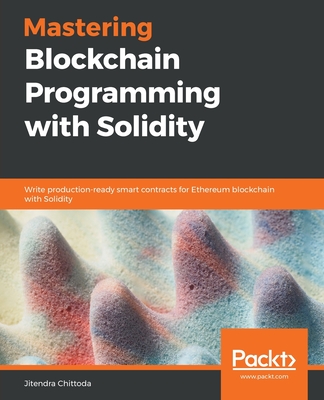Virtual Machines: Versatile Platforms for Systems and Processes
暫譯: 虛擬機器:系統與流程的多功能平台
Jim Smith, Ravi Nair
- 出版商: Morgan Kaufmann
- 出版日期: 2005-06-03
- 售價: $3,040
- 貴賓價: 9.5 折 $2,888
- 語言: 英文
- 頁數: 656
- 裝訂: Hardcover
- ISBN: 1558609105
- ISBN-13: 9781558609105
-
相關分類:
Operating-system
立即出貨 (庫存 < 3)
買這商品的人也買了...
-
 Windows CE 嵌入式系統理論與實務
Windows CE 嵌入式系統理論與實務$680$537 -
 Windows CE.NET 程式設計 (Programming Microsoft Windows CE .Net, 3/e)
Windows CE.NET 程式設計 (Programming Microsoft Windows CE .Net, 3/e)$890$703 -
 深入淺出設計模式 (Head First Design Patterns)
深入淺出設計模式 (Head First Design Patterns)$880$695 -
 深入淺出 Java 程式設計, 2/e (Head First Java, 2/e)
深入淺出 Java 程式設計, 2/e (Head First Java, 2/e)$880$695 -
 C++ Primer Plus, 5/e 中文精華版
C++ Primer Plus, 5/e 中文精華版$540$427 -
 Linux Kernel 完全剖析
Linux Kernel 完全剖析$750$585 -
 Java 認證 SCJP 5.0 猛虎出閘
Java 認證 SCJP 5.0 猛虎出閘$650$514 -
 鳥哥的 Linux 私房菜基礎學習篇, 2/e
鳥哥的 Linux 私房菜基礎學習篇, 2/e$780$663 -
 Microsoft SQL Server 2005 設計實務
Microsoft SQL Server 2005 設計實務$680$537 -
 Ajax 網頁程式設計─Google 成功背後的技術
Ajax 網頁程式設計─Google 成功背後的技術$580$458 -
 Windows Server 2003 Active Directory 建置指南, 2/e
Windows Server 2003 Active Directory 建置指南, 2/e$600$474 -
 ASP.NET 2.0 深度剖析範例集
ASP.NET 2.0 深度剖析範例集$650$507 -
 PHP + MySQL 快速入門
PHP + MySQL 快速入門$680$537 -
 SQL 語法範例辭典
SQL 語法範例辭典$550$435 -
 Linux 驅動程式, 3/e (Linux Device Drivers, 3/e)
Linux 驅動程式, 3/e (Linux Device Drivers, 3/e)$980$774 -
 聖殿祭司的 ASP.NET 2.0 專家技術手冊─使用 C#
聖殿祭司的 ASP.NET 2.0 專家技術手冊─使用 C#$720$569 -
 Advanced Engineering Mathematics, 9/e(Abridged International Student Edition)
Advanced Engineering Mathematics, 9/e(Abridged International Student Edition)$1,100$1,078 -
 Windows Vista 非常 Easy
Windows Vista 非常 Easy$299$236 -
 深入淺出物件導向分析與設計 (Head First Object-Oriented Analysis and Design)
深入淺出物件導向分析與設計 (Head First Object-Oriented Analysis and Design)$880$695 -
 C++ Primer, 4/e (中文版)
C++ Primer, 4/e (中文版)$990$891 -
 現代嵌入式系統開發專案實務-菜鳥成長日誌與專案經理的私房菜
現代嵌入式系統開發專案實務-菜鳥成長日誌與專案經理的私房菜$600$480 -
 鳥哥的 Linux 私房菜-基礎學習篇, 3/e
鳥哥的 Linux 私房菜-基礎學習篇, 3/e$820$648 -
 Google Android SDK 開發範例大全 2
Google Android SDK 開發範例大全 2$890$757 -
 深入淺出 Android 系統原理及開發要點
深入淺出 Android 系統原理及開發要點$450$351 -
 $1,264Semantics with Applications: An Appetizer (Paperback)
$1,264Semantics with Applications: An Appetizer (Paperback)
相關主題
商品描述
Description:
Virtual Machine technology applies the concept of virtualization to an entire machine, circumventing real machine compatibility constraints and hardware resource constraints to enable a higher degree of software portability and flexibility. Virtual machines are rapidly becoming an essential element in computer system design. They provide system security, flexibility, cross-platform compatibility, reliability, and resource efficiency. Designed to solve problems in combining and using major computer system components, virtual machine technologies play a key role in many disciplines, including operating systems, programming languages, and computer architecture. For example, at the process level, virtualizing technologies support dynamic program translation and platform-independent network computing. At the system level, they support multiple operating system environments on the same hardware platform and in servers.
Historically, individual virtual machine techniques have been developed within the specific disciplines that employ them (in some cases they aren’t even referred to as “virtual machines”), making it difficult to see their common underlying relationships in a cohesive way. In this text, Smith and Nair take a new approach by examining virtual machines as a unified discipline. Pulling together cross-cutting technologies allows virtual machine implementations to be studied and engineered in a well-structured manner. Topics include instruction set emulation, dynamic program translation and optimization, high level virtual machines (including Java and CLI), and system virtual machines for both single-user systems and servers.
Table of Contents:
Foreword
Preface
Chapter 1: Introduction to Virtual Machines
Chapter 2: Emulation: Interpretation and Binary Translation
Chapter 3: Process Virtual Machines
Chapter 4: Dynamic Binary Optimization
Chapter 5: High-Level Language Virtual Machine Architecture
Chapter 6: High-Level virtual Machine Implementation
Chapter 7: Codesigned Virtual Machines
Chapter 8: System Virtual Machines
Chapter 9: Multiprocessor Virtualization
Chapter 10: Emerging Applications
Appendix A: Real Machines
References
商品描述(中文翻譯)
**描述:**
虛擬機技術將虛擬化的概念應用於整個機器,繞過實際機器的相容性限制和硬體資源限制,以實現更高程度的軟體可攜性和靈活性。虛擬機正迅速成為計算機系統設計中的一個重要元素。它們提供系統安全性、靈活性、跨平台相容性、可靠性和資源效率。虛擬機技術旨在解決組合和使用主要計算機系統組件中的問題,在許多學科中扮演著關鍵角色,包括作業系統、程式語言和計算機架構。例如,在進程層面,虛擬化技術支持動態程式翻譯和平台獨立的網路計算。在系統層面,它們支持在同一硬體平台和伺服器上運行多個作業系統環境。
歷史上,個別虛擬機技術是在使用它們的特定學科內發展的(在某些情況下,它們甚至不被稱為「虛擬機」),這使得很難以一致的方式看出它們之間的共同基礎關係。在本書中,Smith 和 Nair 採取了一種新方法,將虛擬機視為一個統一的學科。整合跨領域的技術使虛擬機的實現能夠以良好結構的方式進行研究和工程。主題包括指令集模擬、動態程式翻譯與優化、高階虛擬機(包括 Java 和 CLI),以及單用戶系統和伺服器的系統虛擬機。
**目錄:**
前言
序言
第 1 章:虛擬機簡介
第 2 章:模擬:解釋與二進位翻譯
第 3 章:進程虛擬機
第 4 章:動態二進位優化
第 5 章:高階語言虛擬機架構
第 6 章:高階虛擬機實現
第 7 章:共同設計的虛擬機
第 8 章:系統虛擬機
第 9 章:多處理器虛擬化
第 10 章:新興應用
附錄 A:實體機器
參考文獻































